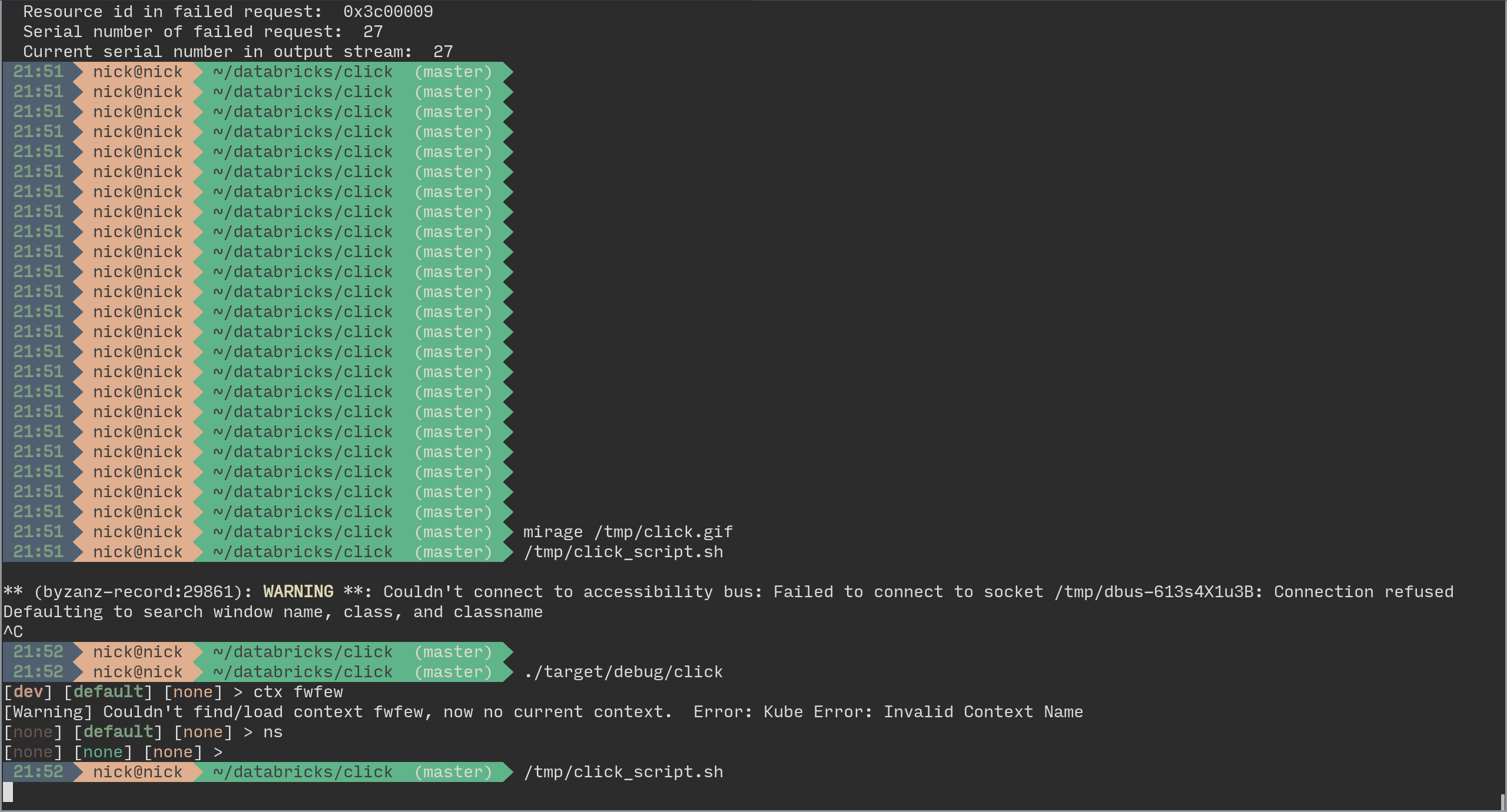Click is the Command Line Interactive Controller for Kubernetes. Its purpose is to manage a large number of Kubernetes clusters/objects quickly and efficiently.
Click is a REPL. When running Click, there is a current active config which includes the current Kubernetes context, and optionally a namespace and Kubernetes object. Commands are then applied to the active config so it's not necessary to keep specifying what objects to target.
There is an aur available.
You'll need rust and cargo. See here for instructions on how to get them.
Click is on crates.io, so you can just run cargo install to install it.
Alternatively, to build it yourself, clone the click repository and run cargo build.
If you used cargo install, you can just run click (assuming ~/.cargo/bin is in your PATH).
If you built from source, run ./target/debug/click. It's not recommended to use cargo run
as that messes with Ctrl-C handling. (see:
rust-lang/rustup#806)
Click looks in ~/.kube/config by default for your Kubernetes configuration. It also stores its own config in the .kube dir. You can change this with the --config option.
Once you're in the REPL, type help to see what you can do.
The order of the prompt is [context][namespace][object].
The object changes color depending on what type of object it is. (e.g yellow for pods, blue for nodes and so on)
Click currently supports the following ways of authenticating to a Kubernetes clusters:
- token
- username / password
- private key / certificate
- gke style authentication provider
For Google Kubernetes Engine, Click supports reading the token already in the kube config file. If that token has expired, Click will request a new token and use that. It does not save the new token back into the config file (yet).
If your Kubernetes cluster is using Node Authorization (https://kubernetes.io/docs/admin/authorization/node/) your API Server may be using a certificate with a DNS name like "system:something". This is technically a bad cert as DNS names can't have a colon in them. Since the WebPKI crate is more strict than Go, Click will not accept the cert from the API Server even though kubectl will.
To temporarily patch WebPKI to accept the cert:
- Build Click
- Run the
fix_bad_der.shscript that is in the util directory - Run
cargo clean - Rebuild Click
